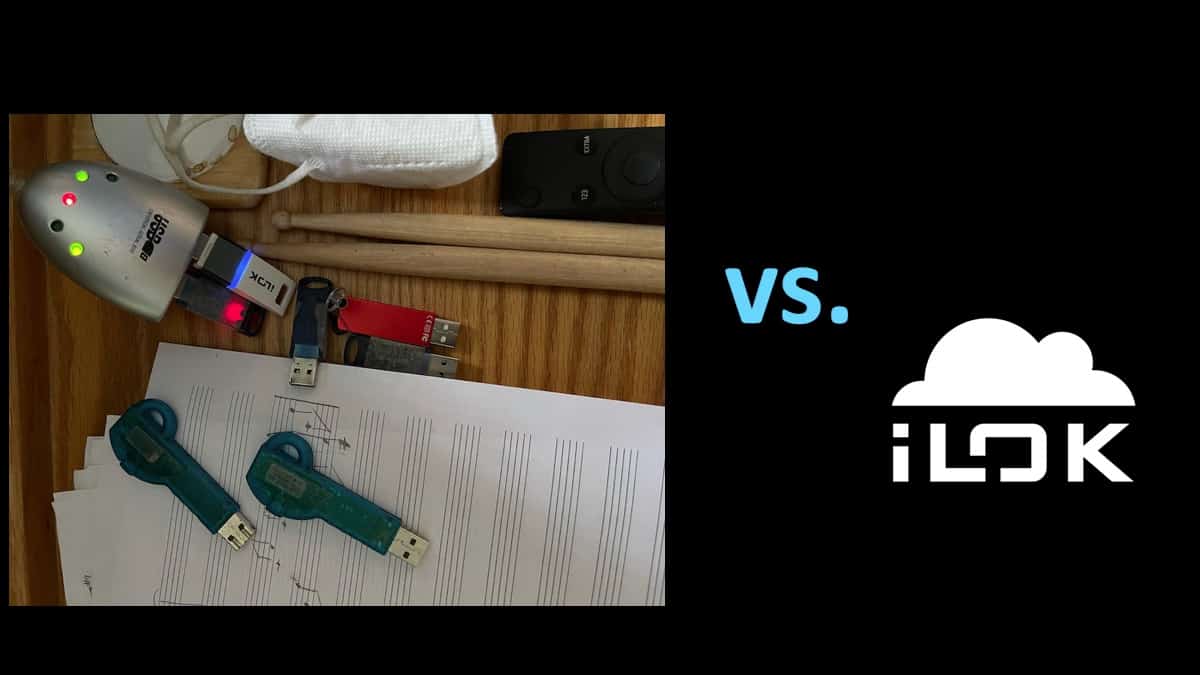Features
To Use an iLok Dongle or Not To Use an iLok Dongle (that is the question)

Stick vs. Cloud: shall we have another fight over copy protection?
A couple of days ago we ran an announcement from Herb Tucmandl, head of Vienna Symphonic Library. But the story is larger than VSL, since most of you viewing this page use software that’s protected by the PACE iLok.
If you missed it, VSL is switching its copy protection from Steinberg’s eLicenser system PACE’s iLok.
It appears that Steinberg is phasing out their eLicenser copy protection in favor of an upcoming new system that we know nothing about at this point.
We have decided to adopt a new license management technology that everyone will benefit from to prepare for coming requirements. An authorization system shouldn’t get in your way, but support you in the onboarding process. Anti-piracy protection technology shouldn’t restrict you as the customer, but secure your investment. A license management shouldn’t stop you from using your products, but enable you to be creative whenever and wherever you are. At this point in time, all we can tell you is that everyone at Steinberg is strongly committed to providing you as soon as possible with a solution that offers more flexibility, more reliability and, of course, a seamless migration.
So that brings up the question whether to choose PACE’s relatively new iLok Cloud option – offered by some developers, including VSL – or to stick with the old-fashioned iLok USB dongle. (You can tell whether your software is Cloud-enabled, which generations of iLok dongles it supports, and whether it supports Host-based auths in the iLok License Manager application.)

Probably the main advantage to an iLok stick is that your licenses aren’t attached to a single machine. You can switch between working on computers in or out of your studio freely, because the licenses are enabled on the dongle.
There’s no worrying about – don’t laugh, this used to be reality – de-installing licenses back onto the floppy drives they came from when you buy a new computer. And those of us who needed to keep up with the latest software had to do that every 2-1/2 years back in the floppy disk install days, never mind just replacing system hard drives or recovering from computer disasters.
The disadvantages to dongles are that they’re fallible and they can get stolen. And some companies’ license-replacement policies are more draconian than others’. PACE’s answer is to offer “Zero Downtime Insurance,” which allows you to buy another dongle and get your licenses transferred onto it right away rather than… how long does it take otherwise?
Now, you’re reading the words of a veteran of many heated arguments over whether it’s right to sell paying customers insurance for that. Charge for a replacement iLok dongle, sure, but should one have to pay to go to the front of the customer service line just to have the licenses you paid for reinstalled more quickly than… how long does it take otherwise?
The most common argument in favor of ZDT is that the price is “only” $30 a year. That sidesteps the issue of the principle. (By the way, ZDT is not a substitute for dedicated business equipment insurance, if you make money with your software and synths. Yes, software is insurable just like hardware.)
But one digresses. Doesn’t it make sense just to keep your iLok licenses in the cloud and not worry about dongles or insurance, assuming the developer of your PACE-protected software offers it?
The definitive answer: yes, no, and maybe.
Your machine must be connected to the Internet while you’re using the Cloud-enabled software. You only have to sign in one time (ever, not once per session), but iLok checks its server from time to time while you’re working. PACE assures us this won’t interfere with computer processing and that the connection is not a data security risk. If you lose your connection, it gives you a warning and a grace period that’s rumored to be an hour.
To use your software on a different machine, sign in on that machine and the session on your other machine ends. Do you have to do that for each individual license (I have 85 on my main dongle)? What if you’re using software with licenses for multiple machines, such as sample libraries?
We’re waiting for answers from our “unnamed sources” and will update this story when they arrive, but you can use a combination of clouds and sticks in the meantime.
So there you have it: keep your computers connected to the Internet, use dongles or machine-based auths, or a combination.
My personal answer is just to use dongles and not worry. I’ve been using PACE-protected software since the floppy install era and never had a single issue (beyond having to pull a dongle out and put it back in so the USB bus sees it once in a blue moon).
But then I typically don’t bring my software to other studios, work in an educational environment or anywhere theft is an issue, or use a laptop that can get bumped.
Choices – the next best thing to not having to think about things you’d rather not be bothered with.
















